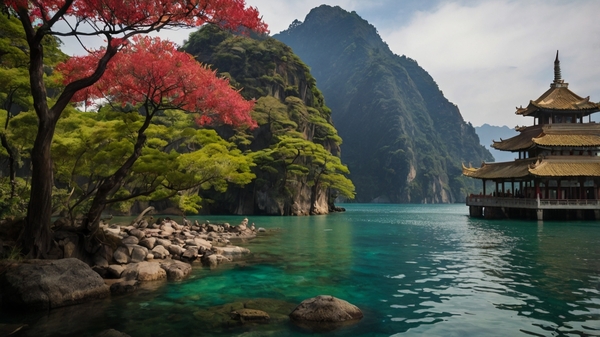Published on
August 15, 2025
In a surprising shift, China, Japan, India, Indonesia, and New Zealand have seen a surge in Australian tourists, while the United States has dropped in popularity for the first time in a decade. The latest data from the Australian Bureau of Statistics reveals that the once-favored US destination is now being overshadowed by closer, more accessible locations in Asia and the Pacific. This change is largely due to rising travel costs, restrictive entry policies in the US, and Australians opting for destinations that offer a mix of convenience, affordability, and cultural richness. As the world recovers from the global travel disruptions, Australians are increasingly choosing destinations like China, Japan, Bali, New Zealand, and India, drawn by their proximity, diverse attractions, and in some cases, more favorable travel conditions. The US, once a major hotspot, now finds itself behind these emerging favorites as Australians look for closer and more convenient holiday experiences.
Recent figures from the Australian Bureau of Statistics (ABS) reveal a noteworthy shift in the preferences of Australian holidaymakers, with a clear decline in visits to the United States. According to the latest data, the US has dropped from being the third most popular travel destination for Australians to the fourth in 2024-25. Compared to a decade ago, travel to the US is now 25% lower, marking a steady and noticeable decline in interest over the years.
This change signals a shift in the destinations Australians are considering for their overseas holidays. Many Australians are now gravitating toward locations that are either more accessible or offer better value for money. The US, once a top choice for Australian travelers, has been surpassed by other international destinations that are better aligned with evolving travel patterns. The decline in US travel can likely be attributed to a variety of factors, including rising travel costs and shifting political climates.
One of the key reasons for the reduced travel to the US appears to be the more restrictive trade and entry policies that have been implemented in recent years. These changes have made it harder for Australians to visit the US, dampening their enthusiasm for the country as a holiday destination. Heightened security measures and complicated visa processes may have contributed to this decline, altering the travel habits of many Australians who once flocked to the United States for both business and leisure.
On the other hand, China has experienced an increase in travel from Australia, rising two spots to become the fifth most popular destination. Despite ongoing safety concerns and government warnings advising Australians to exercise caution when visiting China, the country remains an attractive option for many travelers. This rise in Chinese tourism signals a growing interest in the Asian region as a whole, which has become a more appealing choice for Australian holidaymakers.
A significant driver behind this trend is the shift toward more convenient and affordable travel options that are geographically closer to Australia. A major travel booking company reported a global downturn in US bookings, attributing this to a growing preference for destinations such as Japan, China, Fiji, and New Zealand. These countries are not only closer in proximity but also offer a variety of experiences that suit the tastes and budgets of modern travelers. As a result, the company noted that the shift in travel patterns disrupted traditional booking trends, particularly during peak periods, leading to a downward revision of profit forecasts.
Although US travel has decreased, one destination that continues to perform well for Australians is Indonesia. Bali, a favorite tropical getaway, remains Australia’s top overseas destination, retaining its position from previous years. Indonesia accounted for 14% of all Australian overseas trips in the last year, and of the 1.7 million trips made, an impressive 87% were for leisure purposes. Bali’s allure as a cheap and beautiful holiday spot continues to make it an unbeatable destination for Australian tourists.
New Zealand, another nearby destination, remains the second most popular international spot for Australians. Japan, which has gained immense popularity over the past decade, ranks third. Despite a decline in visits to the US, Japan has seen a remarkable rise in Australian visitors, with the number of trips to Japan tripling since 2015. This growth reflects Japan’s appeal, driven by its fascinating culture, rich history, and wide array of tourist attractions.
Similarly, India has seen a notable increase in Australian travelers, with the number of trips doubling over the last decade. The rise in Indian tourism can be attributed to Australians seeking unique cultural experiences and diverse landscapes that extend beyond the typical Western destinations.
As for travelers coming to Australia, New Zealanders lead the way, accounting for 16.6% of all international arrivals in 2024-25, with 1.39 million visits. Their average stay remains steady at 12 days, similar to the previous year, highlighting the close and consistent connection between Australia and New Zealand. This enduring travel relationship continues to make New Zealand a key contributor to Australia’s tourism industry.
In summary, the decline in Australian travel to the US represents a broader trend of changing global travel habits. As Australians explore alternatives that are more accessible and affordable, destinations like China, Japan, Indonesia, and New Zealand are gaining ground. This shift reflects the growing preference for regional travel and signals a new era of international tourism. The ongoing evolution of travel preferences presents new opportunities for tourism destinations and businesses that can adapt to these changing patterns.
